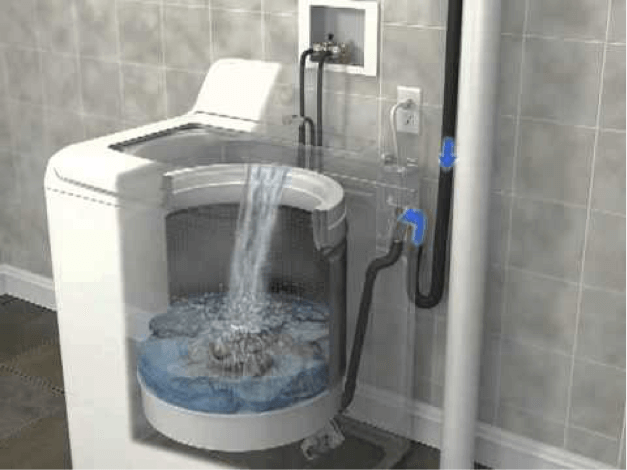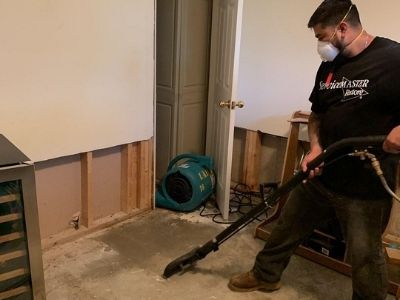Burst Pipes? No Panic! Just how to Identify and Fix Rapidly
Burst Pipes? No Panic! Just how to Identify and Fix Rapidly
Blog Article
Listed here below you'll find additional really good answers related to How to Install and Connect a New Dishwasher.

A burst pipe is a major emergency; you can just stand as you watch water you pay very much to rejoin with the earth. In even worse instances, you see a pool on your cooking area floor, which is a wonderful trip danger, especially if you have kids around. If the pipeline that burst remained in your walls, problem: you might need to paint that entire section.
Just how can a disaster like a ruptured pipe be stopped and also managed? Well, by paying attention to your professional emergency plumbing technicians and also following these policies.
How do I understand when my pipelines have ruptured?
Varying water stress
Pipelines do not just burst in a day. You might have seen that your cooking area tap or shower doesn't run promptly when you transform the faucet. It may stop briefly for a couple of secs and then blast you with more force than common.
In other instances, the water may appear regular at first, then decrease in stress after a couple of seconds.
Wet wall surfaces as well as water discolorations
Prior to a pipe bursts, it will leakage, the majority of times. If this persistent leaking goes unnoticed, the leak might finish right into a wide gouge in your pipeline. One simple means to prevent this emergency is to look out for wet walls ad water stains. These water spots will lead you right to the leakage.
Puddles under pipelines and also sinks
When a pipeline ruptureds, the discharge forms a puddle. It may appear that the puddle is growing in size, as well as regardless of the number of times you wipe the pool, in a couple of mins, there's an additional one waiting to be cleaned up. Commonly, you might not have the ability to map the pool to any kind of noticeable pipelines. This is an indicator to call a specialist plumber.
Untraceable trickling sounds
Pipeline ruptureds can take place in one of the most undesirable areas, like within concrete, inside wall surfaces, or under sinks. When your house goes quiet, you might have the ability to listen to an irritatingly consistent leaking noise. Even after you've checked your shower head and kitchen tap, the trickling might proceed.
Precious visitor, the leaking may be coming from a pipe inside your wall surfaces. There isn't much you can do concerning that, other than inform a professional plumber.
Turn off the Water
When water freezes, it expands in quantity by concerning 9 percent. As well as it broadens with remarkable force: The pressure inside pipelines might go from 40 pounds per square inch to 40,000 psi! No pipe can hold that much pressure, so it bursts. The break might happen where the ice forms, but regularly, it takes place where water pressure finds a weak spot in the pipeline. That might be inches or even feet from the icy location. Find the water shutoff valve and switch off the water to avoid more damage. You could likewise need to shut down the power also, depending on where the leakages happens and how large it is.
Polluted water
Many people think a burst pipe is a one-way electrical outlet. Rather the contrary. As water flows out of the hole or wound in your plumbing system, pollutants find their method.
Your water may be infected from the resource, so if you can, check if your water container has any type of problems. Nonetheless, if your drinking water is provided as well as purified by the local government, you ought to call your plumber quickly if you see or smell anything amusing in your water.
What do I do when I find a ruptured pipe?
Your water meter will remain to run even while your water wastes. To lessen your losses, find the major controls and transform the supply off. The water mains are an above-ground framework at the edge of your building.
How to Fix & Detect a Leaking Pipe
How Do I Know if a Pipe is Leaking?
Leak detection tests can help you determine if your pipe has a leak. Even if you don’t see an apparent leak, you should still conduct leak detection tests regularly to save water and money—and prevent major damage to your home.
Water meter. It can be helpful to figure out what your usual water meter usage numbers are and then monitor them regularly. To monitor your meter, first, turn off all water faucets in your home. Check the meter and write down the numbers. In a few hours, check the meter again. If the numbers have changed, you have a leak. Water gauge. Use a water gauge to test your water pressure. Your showerhead should produce a certain amount of water pressure based on its model and design. If the pressure is lower than it is supposed to be for that specific showerhead, your home likely has a leak. Puddles. Look inside your bathroom, laundry, and kitchen sink cabinets. Puddles around the cabinets or around toilets, tubs, showers, and washing machines indicate the presence of a leaking pipe. You may also notice loose tiles, peeling or flaking paint, or mold caused by water accumulation. Napkin test. Even if you don’t see any puddles, you may still have a leak. You can test for water leaks in the bathroom, laundry, and kitchen by wiping below-sink connections with a napkin, paper towel, or piece of toilet paper. If it becomes damp, you probably have a leaking pipe under the sink. Discolored walls. Walls that are discolored—usually with brown or yellow stains—or bulging might mean that they have been impacted by water damage caused by a leaking pipe. Smell. A leaky pipe will create sitting water, and over time, that water may develop a musty smell. If your home smells musty, but you can’t locate the source, it may be due to a leak. Steps for Fixing a Leaking Pipe
A leaky drain can be remedied by tightening the pipe base, replacing the drain seal, caulking the rim, and tightening the pipe nut. Similarly, a leaking toilet pipe can be treated by tightening the packing nut. You may also need to replace the valve. A leaky faucet may just need tightening or replacement of the washers. If that doesn’t work, consider replacing your faucet. If your pipe has a hole in it, you may want to use a pipe leak sealer or pipe leak tape. This quick fix for water pipe leaks can also temporarily fix a copper pipe leak. https://www.ahs.com/home-matters/quick-tips/how-to-tell-if-pipes-are-leaking/

I stumbled upon that page on What to Know Before Installing a Dishwasher when doing a lookup on the internet. Feel free to take the time to promote this article if you enjoyed it. We value reading our article about How to Install and Connect a New Dishwasher.
Get A Free Estimate
Report this page